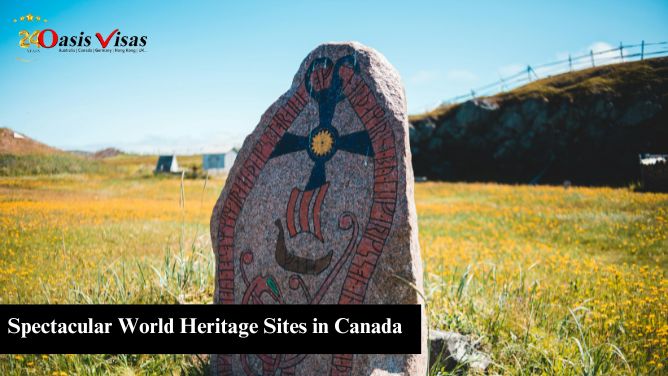
8 Amazing World Heritage Sites in Canada
Canada is a land known for stunning natural landscapes and rich cultural diversity, and it features numerous UNESCO World Heritage Sites that you need to marvel at. These sites have an outstanding universal value and are known worldwide as a way to witness the full background and beautiful scenes that U.S. Has to offer.
1. Canadian Rocky Mountain Parks
In the endowment’s 1979 UNESCO designation, four of these national parks around the Canadian Rocky Mountains (Banff, Jasper, Kootenay, and Yoho national parks) along with three contiguous provincial parks (Mount Robson, Mount Assiniboine, and Hamber Provincial Park) were designated amid the list of Canadian Rocky Mountain Parks only for their distinctive mountain landscapes. With dramatic mountain ranges, glaciers, azure glacial lakes, and abundant wildlife, these parks are quite simply outdoor paradise.
2. Gros Morne National Park
Gros Morne National Park is a geological mecca in Newfoundland and Labrador. That means dramatic fjords, towering cliffs, curious geological formations of ancient rock called “Tablelands,” and diverse ecosystems have earned it a place on the UNESCO list. Visitors can trek through pristine wildlife, boat along fjords, and marvel at the park’s outstanding geological features.
3. Historic District of Old Québec
Old Québec, a UNESCO World Heritage Site since 1985, is a charming district that transports visitors back in time. Cobblestone streets, 17th-century architecture, and iconic landmarks like the Château Frontenac define this historic area. The city’s fortified walls, preserved heritage buildings, and vibrant culture make it a must-visit destination.
4. L’Anse aux Meadows National Historic Site
L’Anse aux Meadows, located in Newfoundland, is the only confirmed Norse site in North America and holds significant historical importance. This archaeological site features remnants of a Viking settlement dating back to around AD 1000. It offers visitors a glimpse into the Norse exploration of the Americas centuries before Columbus.
5. Head-Smashed-In Buffalo Jump
This archaeological site in Alberta provides a fascinating insight into the indigenous peoples’ history and culture. For millennia, indigenous peoples used this cliff to hunt bison, an integral part of their livelihood and culture. The site’s name reflects the traditional Blackfoot story associated with its origins.
6. Rideau Canal
The Rideau Canal, stretching from Ottawa to Kingston, Ontario, is both a historical and engineering marvel. Built in the early 19th century for military purposes, it is now a recreational waterway. The canal’s locks, historic buildings, and picturesque landscapes attract boaters, cyclists, and history enthusiasts alike.
7. SGang Gwaay
Located on the west coast of Haida Gwaii (formerly Queen Charlotte Islands), SGang Gwaay is a Haida village site and burial ground. It showcases beautifully carved totem poles and remains of traditional longhouses, offering insights into the culture and artistry of the Haida people, who have inhabited the area for millennia.
8. Waterton Glacier International Peace Park
Straddling the Canada-United States border, this park combines Waterton Lakes National Park in Canada with Glacier National Park in the United States. Both parks boast stunning landscapes, including rugged mountains, pristine lakes, and diverse wildlife. The park’s designation as a UNESCO site emphasizes the importance of international cooperation in preserving natural heritage.
Canada’s UNESCO World Heritage Sites offer a diverse range of natural wonders, historical landmarks, and cultural treasures. Each site tells a unique story, reflecting Canada’s rich heritage and its commitment to preserving these exceptional places for future generations. Whether exploring ancient Viking settlements, hiking through majestic mountain parks, or wandering cobblestone streets, visitors to these sites are sure to be awe-inspired by Canada’s spectacular beauty and profound history.









